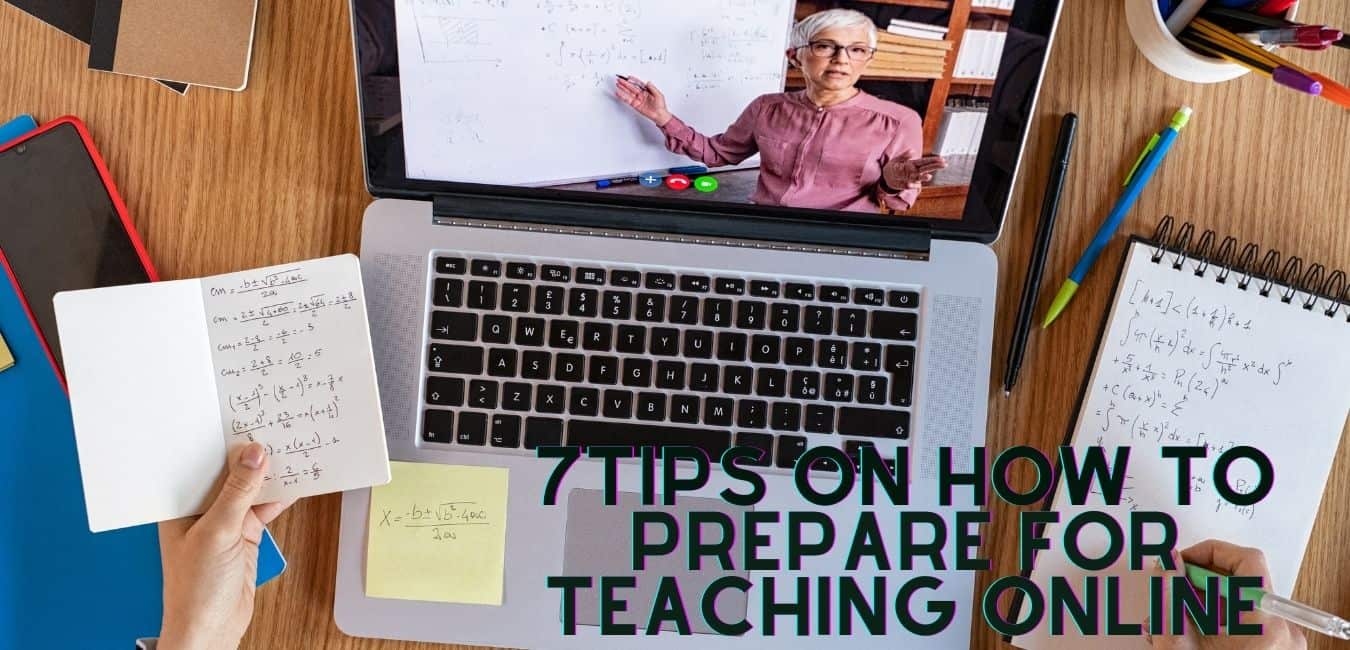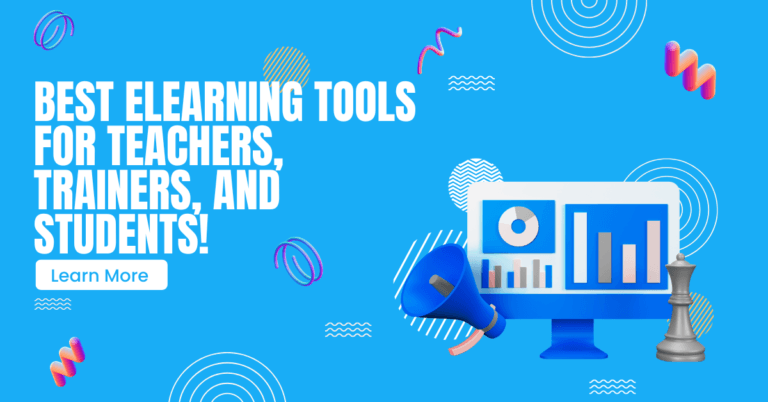7 Easy Tips On How To Prepare For Teaching Online
Introduction To 7 Tips On How To Prepare For Teaching Online
Researches have shown that online education experienced notable growth during recent years due to easier access and general flexibility. This growth opens new ways of income and career advancement for teachers.
Today millions of students worldwide who used to attend physical classes and schools stay at home. Also, teachers from millions of schools who always were prepared with lesson plans, hands-on activities, and methods to deepen relationships with their students, do not have a class to attend now.
Although COVID-19 forced everyone to stay home, teachers and students are committed to their role the best they can. Families and communities tried to find new ways to support children, including remote education and homeschooling.
This situation is especially disruptive for parents and students in low-income communities. Many families do not have financial security, health care, economic opportunities, and other resources and support. This inequity makes this particular condition an impossible situation.
We encourage teachers and parents who are managing this tough situation not to give up. We will cope with this challenge by standing together and offer support and compassion to each other.
Shifting from classroom teaching to teaching online is definitely a big change. While with a little research and practice, it would be possible to obtain the required flexibility and easy access that the students are also seeking for. In the current article, you will find seven tips on how to prepare for teaching online.
1. Plan Your Classes
In a virtual class, the students are not physically in front of their teacher. They probably are not even online simultaneously, since they can be in completely different time zones. An online classroom environment requires planning. Virtual students in the virtual class are different from physical students in terms of their needs.
It is important to get your syllabus and materials ready for displaying clearly before the class starts. This will allow the students to see if the classroom fits into their lives regarding the deadlines, materials, and other requirements.
It would be best if you avoided surprises in virtual classes. It is normal in a physical classroom to get a quiz without a prior announcement, but in an online class, the story is totally different, considering the time frame of the class.
2. Prepare And Master Technology
If you want to teach online and manage a virtual class, you will need to have the technical ability. First, you should have the right software and hardware. A reliable computer device, a good internet connection, and the best platform to provide you with your requirements are the crucial items you need.
There are tons of examples out there; Moodle is one of them. This is an online platform that tends toward the social side of education. Search properly, find the platform that suits you more, and play around with it. When you know your virtual class platform better, you can turn it into one of the best it can be.
It will help if you consider your students’ equity of access, too. Many students do not have access to either the internet or a computer or mobile device or may have incompatible access. Remember, if the students have access to technical devices, it would be through smartphones or tablets rather than the computer. Make sure to use a mobile-friendly learning platform.
Other than that, you should consider your students’ typing skills and computer literacy. Giving them more time to complete the answers or flexible deadlines will take care of such concerns. When teachers provide necessary supports and allow for flexibility, the students with special needs also would benefit from the new virtual environment.

3. Great Teaching Skills Will Help You Stay Good Online
If you were a good teacher in a physical classroom, you will also be good online. However, everything is new about this experience. Remember, what makes great teaching in a physical classroom will convert to a virtual environment.
When things get hard, remember to create a clear system of learning goals. Be aware of various ways that students might go about reaching the goal. To prevent yourself from feeling overwhelmed, reduce your content into smaller pieces.
Make your expectations clear as you were in a physical classroom. These expectations can be about academic and online learning. Checks and comments on assignments to give the students frequent feedback online.
To motivate the students, supporting them, and keep them on track, use the chat features. It reassures them to know that they can ask you questions while working on an assignment or when they get stuck.
These days, more than ever, the students need help to stay motivated and engaged. Improve your metacognition to help their own learning through asking reflection questions as a part of each assignment.
4. Set up an Adequate Working Environment For Teaching Online
The next challenge is working remotely. Working at home requires a perfect environment and a decent amount of self-discipline. Otherwise, it might be a disaster. It would be best if you did some planning to avoid this.
Create a workspace. Try to keep it only for work. It would help if you prepared your work environment to encourage productive work behaviour and be friendly and inviting.
Your workplace should be without distractions like TV, household tasks, and other family members. Natural lighting is a perfect way to make the environment warm, illuminate, and airy.
If you do not have access to adequate daylight, try to implement enough lighting, such as an overhead lamp, recessed lights, and task lighting if required. Using an office chair that helps you feel comfortable during teaching online and prevent you from back pains and neck issues will complete your workspace.
5. Innovate And Stimulate Discussions
As mentioned earlier, online classrooms are way different from traditional classrooms. These kinds of classes are more prone to create a negative feeling. Starting and encouraging discussions is a perfect way to create a good feeling in your students.
It would be best if you tried to encourage the students to participate in the discussions. There are various ways to encourage them to post lectures, monitor progress, assign reading materials, and get involved in the discussion.
Try to encourage your students to engage in the class weekly rather than just turning in assignments. Getting involved in a planned, in-depth discussion, for instance, leads your students to work with the material in ways that they would not do on their own. It ensures that your students obtain more than just a grade from your class.
Triggering conversations and connections is more crucial than ever. The students need to connect with you in ways that work best for them. Find out the best ways to create a feeling of connection in your students, by considering the platform you use for your online class, the age of your students, and their access. Some ways to fuel a conversation are short videos, text-based chats, and comments.
Try to teach in a way that minimizes frequent teacher and adult support. This can support enhancing students’ independence while providing parents, older siblings, and guardians with a chance to be freed and focus on their own tasks.

6. Find Time For Yourself And Reflect
As a teacher, you are just learning how to utilize online learning platforms, same as your students learning how to utilize those platforms as learners. Plan a time for yourself to express how the experience is going for you and your students, but keep in mind, as mentioned earlier, you are not going to be perfect. Ask yourself the following questions, for example:
- Are there any trends in student participation? If so, what would be the potential reason?
- Do I learn anything from my students as participants of my virtual classroom? If yes, then what am I learning?
- What can I do to make learning more approachable, inclusive, and meaningful?
- How are we doing physically, mentally, and emotionally in a virtual class?
7. Ask For Help And Feedback
Your students also can provide you with priceless feedback that can help your class progress. While online education is moving forward quickly, the students learn many experiences in an online classroom. What they have learned from a virtual class can inform you of the positives and negatives of your overall online classroom.
In addition, your students also have experienced through connecting with other online educators. So they have a lot to share with you, and you can be aware of other teachers’ experiences. Education is all about sharing knowledge and experience. So these connections could prove priceless to your online educator development.

Additional Tips For Virtual Teachers
Create a Social Media Account for Your Class
Find out what social media platforms your students and families are often using. Perhaps most of your students are on TikTok, as it is a popular platform for teenagers. Most of your student’s parents can be accessed through Instagram.
Create a professional social media account for yourself, and a private social media account for the students and their families; in this way, you can post class announcements, assignments, true “mini” lesson videos, tips, shout-outs, reminders, and encouragement in this virtual environment.
Communicate with Students and Families in Multiple Forms
If you want to be sure that the students and their parents do not miss crucial information, post your announcements in various places. Please post it on the platform, send it via email, text it through instant messaging, set reminders in group chats. Also, make sure that the students and their families have access to various ways of contacting you. Write your email and phone number at the bottom of each communication.
Communicate Regularly
Keep a consistent online presence. The online classroom environment requires communication. Please introduce yourself and ask your students to introduce themselves, too. Doing such actions will help bring humanity and warmth into your classroom. Please remember that online classes can easily lack this warmth.
Inform your students about the best methods and times they can contact you. Lacking a teacher physically in front of the students can make some of them feel stressed. You can lessen this stress by answering questions on time and giving them plenty of instruction and feedback.
Motivate Your Students
Children are totally different from each other, so everyone has different levels of ability and ways to learn. Motivation has a significant role in the learning process.
For some students learning a new thing is motivating, but it is not true for other students. Not self-motivated students might skip doing assignments that are not required. Discover ways to motivate all of your students to get the best outcome for your class.
It can include giving extra points for online discussions or optional assignments. To help push forward the more unmotivated students, deadlines are also a good way. You want to find ways to help your students receive the best results from your class without the advantages of your physical presence.
Conclusions
Overall, virtual education in an online class is a great opportunity. Flexibility is the big advantage of such a class. Increasing online class popularity, a growing market for educators and an exciting career development opportunity are emerging.
It would be best if you had the potential to reach students that you would never meet in a physical classroom. Online teaching is not an easy task and requires knowing some basics and being prepared, but it is not as daring as it seems, too.
Complete your research, plan your methods, and move forward. As online teaching is relatively new, there really is not an established way to do it, yet. If you research a bit and prepare yourself nicely, you could find yourself at the forefront of the online education movement.
I trust you enjoyed this blog post on how to prepare for teaching online. Please stay tuned for more articles like this to come. Take care!
JeannetteZ
Your opinion is important to me
I would love to hear from you. Please leave me your questions, experiences, remarks, and/or suggestions about preparing for teaching online in the comments section below. You can also reach me by email at Jeannette@WorkFromAnywhereInTheWorld.com.
You might also enjoy the following blog posts:
Teachable – Create And Sell Online Courses And Coaching







